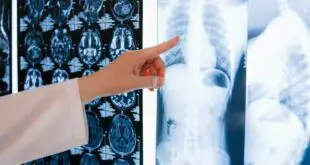Most people wonder whether humans go into heat like most animals during their breeding seasons, and this is the focus of this article. Animal reproduction and its biological processes are complex and exciting topics for most people.
Most animals go into heat, which is a drive for reproduction; people wonder if it is the same for humans.
The Estrus cycle is in mammals, so are humans subjects to the same? What is the cycle about? What changes do animals experience during this phase? Let’s find out;
Do Humans Go Into Heat?
No, humans do not go into heat in the same way that some animals do. Heat, also known as estrus, is a reproductive cycle characteristic of many mammals, particularly those that engage in sexual reproduction.
Women experience a menstrual cycle, which involves the shedding of the uterine lining and the release of an egg for potential fertilization. There are changes in hormones and mood, but they aren’t as drastic as those in other animals.
What Is Going Into Heat?
Going into heat is a coined term that you will often hear if you surround yourself with farmers or animal lovers. It is an extensive topic, and you need some information on it to understand what it entails;
Going into heat is when females are most fertile and sexually receptive, frequently accompanied by specific behavioral and physical changes.
Estrus, also known as the estrous cycle, is a stage frequently seen in mammals, including dogs, cats, horses, cows, and many other species.
Female animals show a variety of indications during estrus that points to their readiness for mating. Changes in behavior, such as increased restlessness, vocalization, or seeking out male company, are some of these indicators.
Physical alterations could include vaginal enlargement, fragrance or pheromone production adjustments, and modifications to vocalizations or body language. These signals draw men and show that the female is fertile during this time.
Estrus cycles can last long and occur frequently, depending on the species. Some animals, like dogs, can go into heat more than once a year and have relatively short estrous cycles.
Some have longer cycles that can span many months, such as elephants. Season, environment, and hormone regulation are just a few examples of the variables that might affect when an estrus occurs.
Animals in heat could display particular behaviors and physical changes, and their sexual activity is governed by instinct, reproductive impulses, and hormone fluctuations. Humans have a wide range of complicated elements that affect sexual behavior.
What Are Some Ways To Know If An Animal Has Gone Into Heat?
You must understand how your pet behaves when on heat if you are an animal owner. This will keep you from doing things that might be emotionally upsetting to the animal. So what signs should you look out for?
- Behavioral Modifications. Animals in heat may exhibit increased restlessness, vocalization, and agitation. They might attempt to flee more frequently or vehemently or wander around looking for a partner.
- Modifications in Appetite. Some animals’ appetites may change during heat, becoming greater or smaller. Depending on the species and individual, this can vary.
- More Interaction with Other Animals. Animals in heat may become more friendly and look for interaction with other animals, especially those of the opposite sex. They might show more interest in playing, grooming, or acting subserviently or flirty.
- Swollen Genital Area. One of the most apparent physical modifications is the genital area’s swelling. The vulva or testicles can enlarge or become more noticeable.
- Change in Urination. Female animals may urinate more frequently and leave scent trails to attract mates. Pheromones or other chemical markers that indicate receptivity may be present in the urine.
- Scent Marking. During heat, both male and female animals may exhibit scent-marking behaviors. They may leave smell trails, rub against things, or emit pheromones through their urine or glandular secretions to attract mates.
- Increased Mounting or Courtship Behavior. Male animals may engage in more frequent mounting activities, while females may demonstrate receptive actions such as “flagging” their tails to the side or remaining still during mating.
How To Handle An Animal That Has Gone Into Heat?
What do you do after your dog or cat gets into heat? What is the right move to ensure you maintain a healthy emotional bond with your pet? The details will differ depending on the animal, but here are some general guidelines;
- Provide enough room. If the animal is housed in a small space or enclosure, ensure it has room to wander about peacefully. Larger animals, like dogs or livestock, who may grow restless during heat, must be reminded of this.
- Protect the environment. Take the appropriate measures to stop unwanted mating or unintentional elopements. This may entail separating the animal from other males or potential mates, constructing solid fences, and limiting interaction with intact males.
- Keep an eye on behavior. Animals going through the heat may become more loud, restless, or attention-seeking. Be alert and watch for aggressive behaviors, excessive mounting, or efforts to flee. Consult a veterinarian or an animal behaviorist for advice on controlling these habits.
- Provide enough care. Ensure that the animal’s basic needs, such as clean water, healthy food, and appropriate housing, are satisfied. Animals may require more attention and monitoring during heat to ensure their health and well-being.
- Think about spaying or neutering. Spaying (removing the ovaries and uterus in females) or neutering (removing the testicles in males) is a good alternative if you do not intend to breed the animal.
Spaying or neutering helps prevent unplanned births, lowers some health risks, and can aid in managing behavioral difficulties associated with heat cycles.
Understanding The Human Equivalent of Getting Into Heat
There are several features of human sexual behavior and fertility that can be broadly compared, even if humans do not have a precise equivalent of going into heat like animals do.
In humans, women go through a menstrual cycle, a monthly reproductive cycle. In this cycle, an egg is released from the ovaries (ovulation), and the uterus is ready for a future pregnancy.
Although it might vary from person to person, the menstrual cycle typically lasts about 28 days. The fertile window occurs during the menstrual cycle when a woman is most likely to become pregnant if she engages in sexual activity.
This window, when the egg is viable and can be fertilized by sperm, often occurs a few days before and following ovulation. It is the time when women are most fertile.
Some women may experience subtle body changes during the fertile window, even though no overt visible indicators like animals in heat exist.
Changes in the cervical mucus consistency, a minor rise in body temperature, or an intensified urge for sexual activity are a few examples.
The overt behavioral and physical changes exhibited in animals during estrus are more evident and strong than these warning indicators.
What Are The Factors Influencing Human Sexual Behavior And Fertility?
The menstrual cycle is a crucial part of the human reproductive system, and you ought to understand the factors that play a role in it. So let us get into the details of some aspects that affect human sexual activities and fertility;
- Biological elements. Hormonal impacts, genetic predispositions, and physical health are all biological elements. Hormones like estrogen and testosterone influence the urge for sexual activity and the ability to reproduce.
- Psychological Factors. Individual attitudes, beliefs, emotions, and experiences all impact sexual behavior. Body image, self-worth, prior events, sexual orientation, and personal preferences are a few examples.
- Socio-cultural Factors. Sexual behavior and fertility decisions can be significantly influenced by cultural and religious beliefs: Society’s views on sexuality, gender roles, and social standards regarding family planning.
- Relationship Factors. The dynamics and quality of a person’s relationships can influence sexual behavior and fertility decisions.
Factors such as emotional connection, communication, and satisfaction within a partnership can impact sexual activity and fertility choices.
- Environmental Factors. The availability of reproductive health services, social support networks, and economic stability all impact family planning and fertility decisions.
- Education and Knowledge. Sexual behavior and fertility decisions can be influenced by awareness, knowledge, and access to appropriate information on reproductive health, contraception, sexually transmitted infections (STIs), and fertility alternatives.
- Personal Values and Beliefs. Decisions about extramarital sex, contraception, abortion, or assisted reproductive technologies may be influenced by these values and beliefs.
Conclusion
The mystery of whether or not humans go into heat is now solved, and you better understand the human reproduction cycle. Humans don’t go into heat; the menstrual cycle is the closest equivalent.
Women undergo hormonal changes during this cycle, and some will have a higher sex drive around this time. Human sexual activities are dictated by more complex factors and heightened intelligence which makes them safer and more civil.
 Being Human
Being Human




